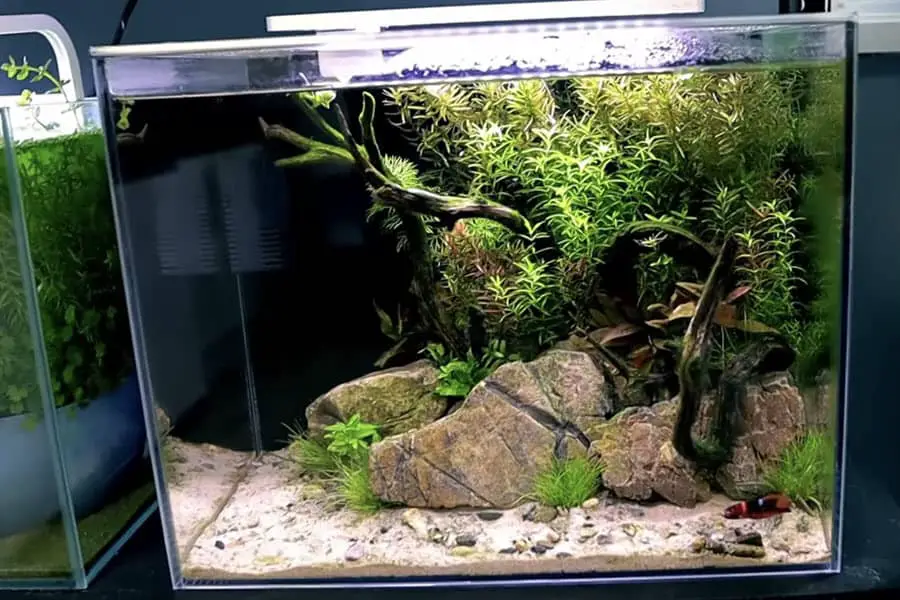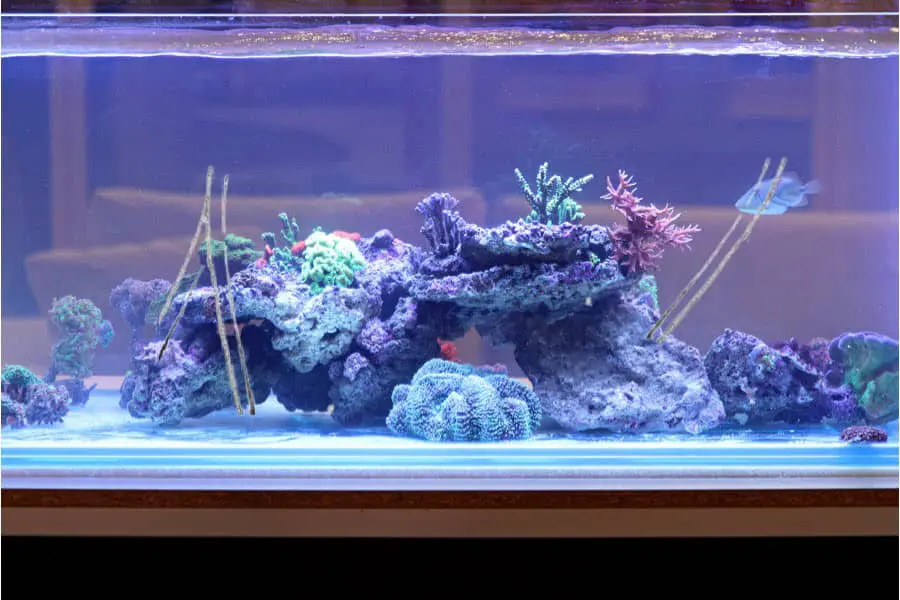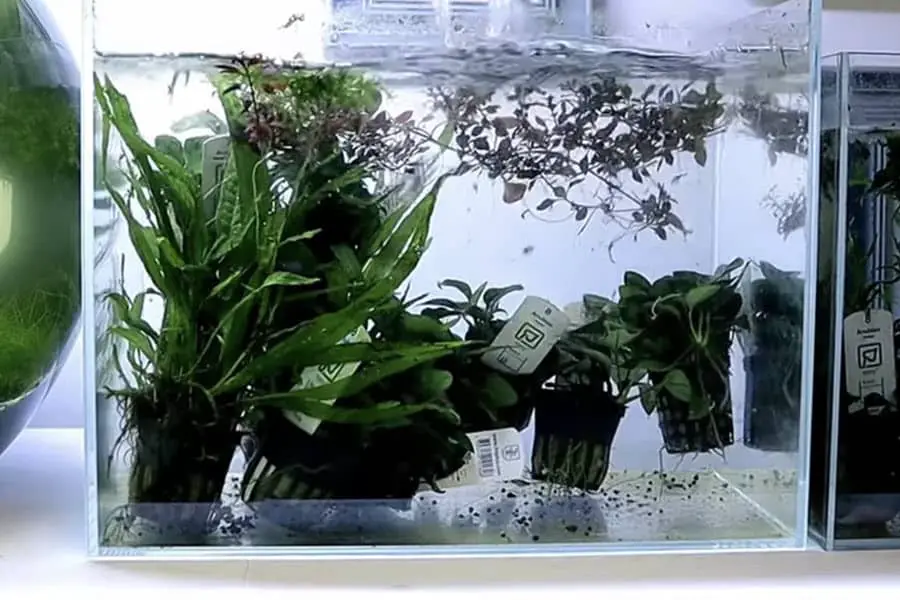How To Remove Scratches From Aquarium Glass: A Quick Guide

No matter how careful you are with your aquarium, scratches are inevitable. They could easily ruin the aesthetic appeal of the aquarium you have passionately worked on. Usually, the scratches on the front panel are most annoying because that’s always in plain sight. You can’t unsee it! If you have got the same situation where you can’t stand those unpleasant-to-the-eye scratches, and want to get rid of them, here is how to do it effectively:
You can remove scratches from your aquarium glass using teeth whitening toothpaste or cerium oxide. You can either do it by hand using cotton swabs (preferable for fine scratches) or buy an electric hand drill attached via buffing wheel for efficient results. For getting rid of moderate to deeper scratches, use liquid glass resin.
Removing scratches off the aquarium glass might seem a daunting task at first. However, it is not at all complicated if you can get the process right. The following article briefly touches upon important aspects and proven methods to remove scratches from aquarium glass. You don’t have to be an expert, simply follow the step-by-step process we have shared below, and with ease and convenience, you will get the job done.
Glass Vs. Acrylic Aquariums
Two of the most commonly used materials for aquarium viewing panels are acrylic and glass. Do you know which one you have?
Acrylic is a durable and lightweight material, but it can be easily scratched if not maintained with care. However, it is not difficult to remove scratches from aquariums made of acrylic. In most cases, you can even lighten somewhat moderate scratches with a little bit of work.
On the other hand, glass aquariums are more affordable than their acrylic counterpart. They usually have a longer lifespan and are scratch-resistance to some extent but don’t mistake it for being scratch-proof. Scratches on a glass aquarium may give you a hard time removing them.
Although acrylic and glass are both different materials, the ways to remove scratches from them are quite similar.
How Deep Your Aquarium Glass Scratches Are?
The first thing you need to determine is the severity of the scratches. Run your fingernail over the affected area, and if you don’t feel those scratches, they are probably shallow and can be easily removed with the techniques we have given below.
For moderate scratches, the ones you feel on your fingers can be pretty challenging to buff out. However, they are feasible to remove. Now, coming to the deeper scratches, they might not be repairable. However, you can still apply the methods to see how much it affects them or if not at all.
Best Ways to Remove Scratches from Aquarium Glass

Depending on where you got the scratches on your aquarium, you may need to empty it and find temporary housing for your tank’s livestock. It’s more convenient and safe to remove scratches from an empty aquarium than a water-filled one.
To make the scratch removing process more efficient, you will require an electric or battery-operated hand drill and a buffing wheel. With regards to the usage of these tools, there are a few things that you must keep in mind and comply with as you engage with the following techniques:
- Always use the hand drill in the lowest settings, and keep spraying water on the affected area, so it remains wet and cool while buffing. Overheating tends to break or melt the aquarium’s vision panels.
- You can buy a buffing wheel of your choice, but make sure the pad on it is not too coarse to cause haziness in the glass.
- Always clean the scratched surface using a soft microfibre cloth before buffing. Even if a grain of gravel comes between the glass and your buffer wheel, it can severely ruin the area with multiplied scratches.
- Apply even and steady pressure when using a hand drill. To prevent visual distortion, avoid pushing the machine too hard on the glass surface and don’t overdo it in one place.
- Never forget to rinse off the abrasive/polishing material with clean water after buffing out the scratches. Since it contains harmful chemicals, any amount of residue is deadly to your aquatic pets.
Method 1: Use Teeth Whitening Toothpaste
NOTE: Ideal for both glass and acrylic aquariums.
Before you get your hands over specialized products, try removing scratches using any teeth whitening toothpaste available in your home. Preferably, get a toothpaste with baking soda for enhanced results.
All you have to do is, take a small amount of toothpaste and rub it on scratches using cotton swabs. Keep sprinkling water on it as the paste starts getting sticky on the surface.
You can do it with your hand if you are dealing with light scratches that are also relatively less in numbers. For the scratches spread over a larger area or are somewhat moderate, use an electric hand drill attached with some sort of buffing wheel.
Method 2: Polish Aquarium Glass with Cerium Peroxide
NOTE: Ideal for both glass and acrylic aquariums.
Arguably one of the best abrasive materials out there, cerium oxide is a pale yellow-white-looking powder mainly used for polishing and removing fine scratches and scuff marks from glass and mirrors. You can buy it from any local hardware shop or online.
You have to create a liquid paste by mixing water with cerium oxide in a 2:1 ratio. Simply mix 2 cups of water in 1 cup of cerium oxide, and your polishing compound is ready. Next, put the mixture in a bottle and shake well to prevent the powder from settling down at the bottom.
To get started, prepare your hand drill and attach it to the buffing wheel. Dampen the wheel with the cerium oxide solution and put some of it on the scratched area. Turn on the drill, and start buffing out the surface with your hand lightly placed on the machine. Apply even pressure on the scratched surface and spray water on it regularly to avoid overheating.
Don’t do the buffing part more than is required. You have to keep watching the scratches to know how much they have reduced. Once you have gained the expected result, rinse the surface off with clean water, and you have successfully restored the beauty of your aquascape.
Method 3: Fill up Scratches with Liquid Glass Resin
NOTE: Ideal for glass aquariums.
Liquid glass resin is primarily used for repairing/filling up cracks in a car’s windshield. One of the less-known but efficient glass resin applications is scratch removal. There are quite a few popular brands like Epoxy you can buy it from.
To prepare the resin for usage, follow the manufacturers’ label instructions. Next, fill the solution in a syringe and carefully pour it on the affected area. Allow it to sit on the scratches for 24 hours and then run the buffer to remove the excess resin. The buffing pad must be wet using cerium oxide solution or some glass cleaner of your choice.
Once you are done with the process, spray rubbing alcohol or sanitizer to clean the surface and wash it off with clear water.
How to Prevent Scratches on Aquarium Glass?

You can’t keep your aquarium glass completely scratch-free. You are going to get them here and there on the tank, mostly at the time of cleaning. However, you can certainly prevent deeper scratches on the glass by avoiding any harsh cleaning material on the surface.
Always use a soft microfibre cloth to clean off the dust and dirt, and don’t go too hard scrubbing the glass. Be extra careful with scraping algae out of the tank. Do not wildly stir up the aquarium when filled with substrate, sand, or gravel. Incorporating these practices will ensure less damage to the viewing panels.
What to do for Deep Scratches?
If you have already treated the scratches on your aquarium using the methods or polishing materials mentioned above, but you can’t see any significant change, it probably means those scratches are deep enough to repair.
Now, if you insist on getting your eye off of the ugly scratches ruining your viewing pleasure, there are 3 options you can opt from.
- Hire a professional glass repairing company if it doesn’t exceed the cost of a new tank.
- A more cost-effective way will be to replace the individual panel.
- You may already know your last option – use scratches as a convenient excuse to buy a new aquarium.
Conclusion
The process for buffing out scratches is the same for almost all scratch removing or polishing compounds. We hope this article helped you remove scratches from your aquarium glass and provide you with a basic understanding of the topic.
